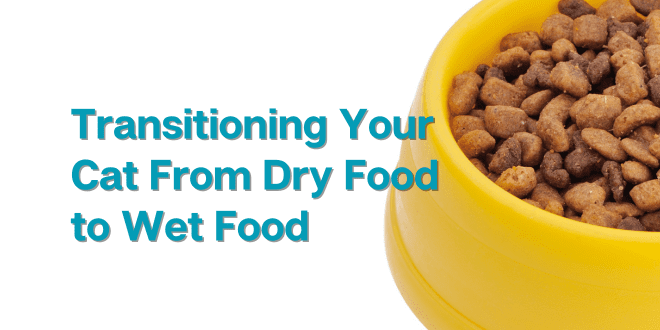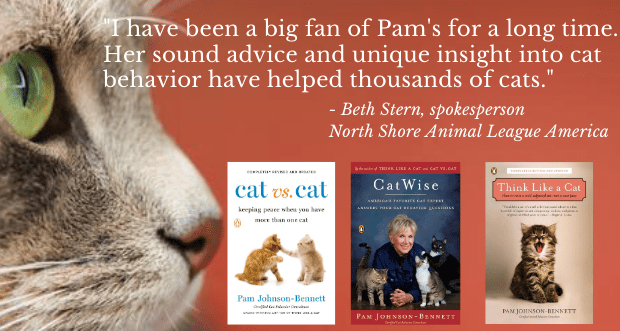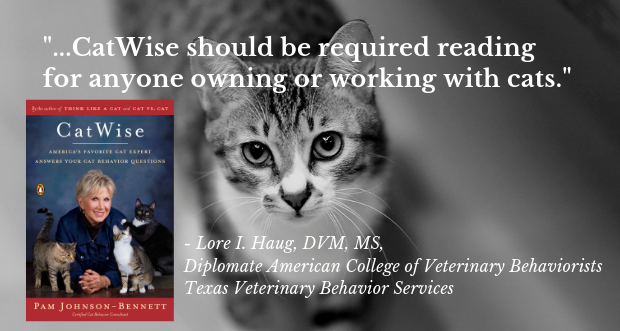
Cats are creatures of habit and making any type of significant change can be tricky. Making a food change requires extra care because of the potential health complications that can occur if done incorrectly or abruptly.
Why Would You Make a Change to Wet Cat Food?
There are many reasons why you might want or need to make this change:
- Wet food contains more protein and fewer carbohydrates than dry food and that’s a more natural diet for a cat.
- Wet food also has a significantly higher water content and that can be a helpful factor in avoiding urinary issues.
- Wet food is often viewed as more palatable by cats.
- Your veterinarian may have put your cat on a prescription formula food that only comes in wet form.
- Dry food may contribute to the risk of obesity and diabetes
Before Making the Change From Dry Cat Food
Unless your veterinarian has prescribed a specific formula or brand of food, take time to research which food would be best for your cat. Seek your veterinarian’s advice regarding various brands or formulas.
Keep in mind that cats are obligate carnivores so when you read cat food labels pay attention to the order of how ingredients are listed on the side of the can. You want to see good quality protein sources listed first.
A Gradual Transition For Your Cat
Even if you’re going to change your cat over to the best quality wet food from a bargain basement dry food, it’s important that you not rush. Don’t take the attitude that your cat will eat when she gets hungry enough because that can result in a potentially life-threatening situation for your cat. Hepatic lipidosis is a life-threatening liver condition that can develop when a cat goes without eating for more than a couple of days.
Going from dry food to wet food will be viewed as a huge change for some cats, but could be an easy switch for others. Going from one brand of dry food to another brand of dry is sometimes difficult enough because of smell, taste, and texture issues but imagine how strange it might be for some cats to experience the very unfamiliar texture of wet food. So don’t do an abrupt transition unless advised to do so by your veterinarian.
Your Cat’s Feeding Schedule
If you normally leave food down for free-choice meals, transition to scheduled mealtime in order to allow your cat to get hungry enough to want to try the wet food. If your cat is able to nibble on dry food all day long she may never feel the need to even take a taste of the new food. Start on a schedule of three or four dry food meals a day (unless you receive other directions from your veterinarian) and don’t leave the food down for more than 20 minutes. When you place the food down, alert your cat to the fact that it’s mealtime. Once your cat has accepted the new routine of scheduled mealtime over free-choice feeding, you can then start the transition.
You can start the changeover by putting a little wet food in with the dry food. Either sprinkle dry food on top of the wet or mix some dry food into the wet food so your cat has to work a little harder to get to the dry food. Gradually reduce the amount of dry food you mix into the wet food each day until you’re feeding an exclusive diet of wet food.
Make the wet food as appealing as possible. Your cat may devour it the moment you place the bowl on the floor, but kitty may also turn her nose up at it. Try warming the food slightly to release the aroma. Never serve canned food straight out the refrigerator. Cats prefer food to be body temperature, or at least room temp. Don’t leave wet food down for more than 20 minutes because it will dry and lose its taste appeal. Your cat certainly won’t be attracted to trying to pry food that has turned to concrete, out of the bowl.
Mealtime Monitoring in Multicat Homes
If you have more than one cat and you’re doing the transition from dry to wet food, give each cat an individual bowl so you can be sure everyone is getting an adequate amount of food. In some cases that may mean feeding cats in separate locations.
Need More Information on: Switching Dry to Wet Cat Food?
For help in transitioning your cat to wet food, contact your veterinarian. Your veterinarian knows your cat and can make specific and appropriate recommendations on the process on an individual case basis. If you have questions regarding which food would be best for your cat, your veterinarian can offer guidance there as well.
For more information on cat behavior and training, refer to the books by best-selling author Pam Johnson-Bennett. Pam’s books are available at bookstores and online. We’ve included links to Amazon here on our website.
FIf you have a question about your cat’s behavior or health, contact your veterinarian. This article is not intended as a medical diagnosis nor is it a replacement for your cat’s regular veterinary care. This article is for general information purposes only.




